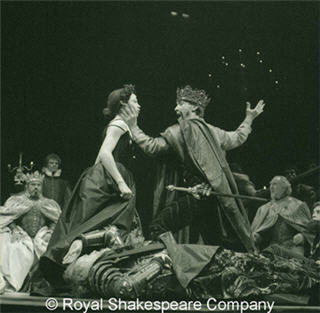
Hamlet plays Lucianus in The Mousetrap, Hamlet Act 3 Scene 2. Director: Ron Daniels, Actor: Rogers Rees (Hamlet), 1984. (Image courtesy of the Royal Shakespeare Company.)
Instructor(s)
Diana Henderson
Prof. Peter S. Donaldson
Prof. Shankar Raman
MIT Course Number
21L.009
As Taught In
Spring 2004
Level
Undergraduate
Course Description
Course Features
Course Description
Three hundred and eighty years after his death, William Shakespeare remains the central author of the English-speaking world; he is the most quoted poet and the most regularly produced playwright — and now among the most popular screenwriters as well. Why is that, and who "is" he? Why do so many people think his writing is so great? What meanings did his plays have in his own time, and how do we read, speak, or listen to his words now? What should we watch for when viewing his plays in performance? Whose plays are we watching, anyway? We'll consider these questions as we carefully examine a sampling of Shakespeare's plays from a variety of critical perspectives.


